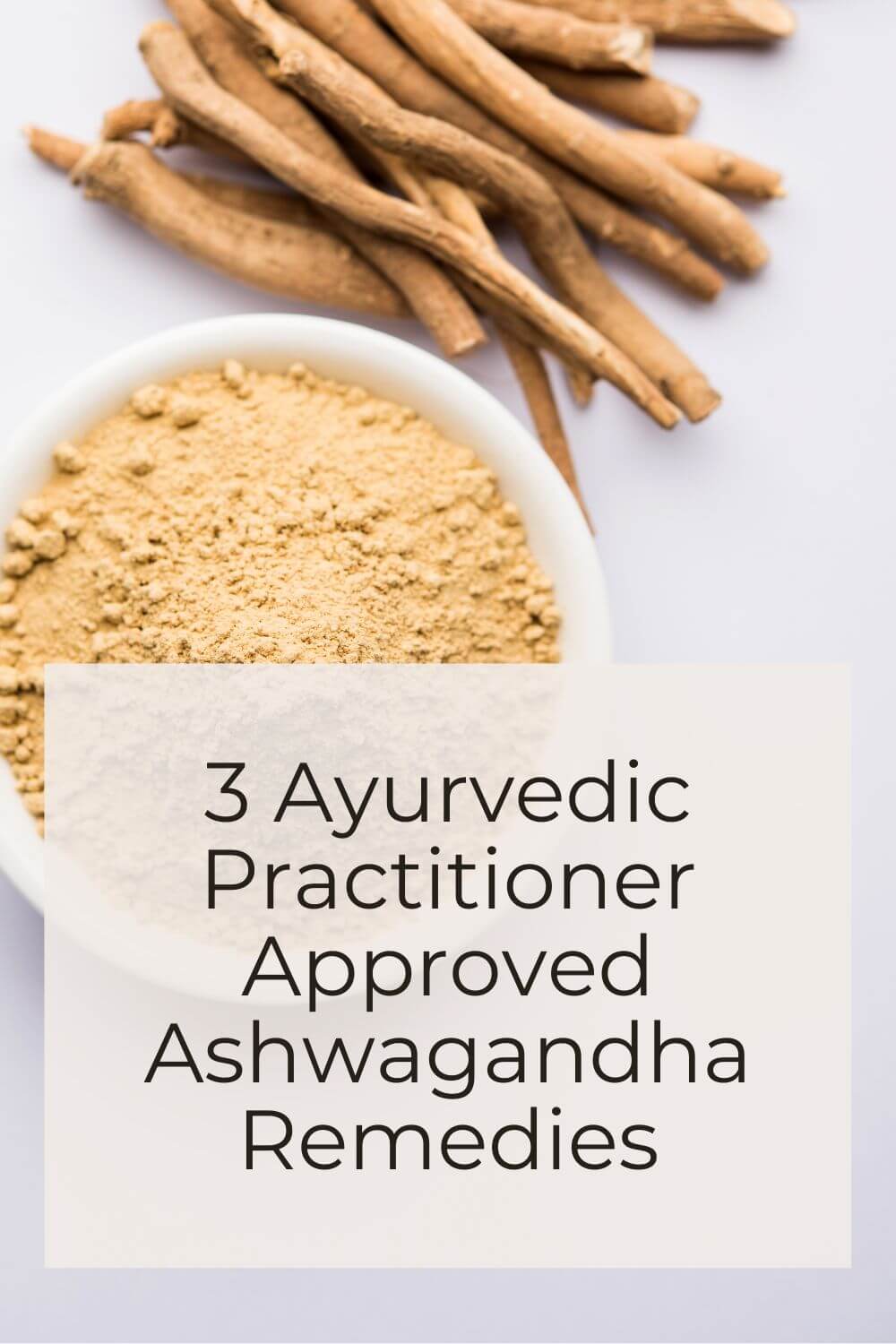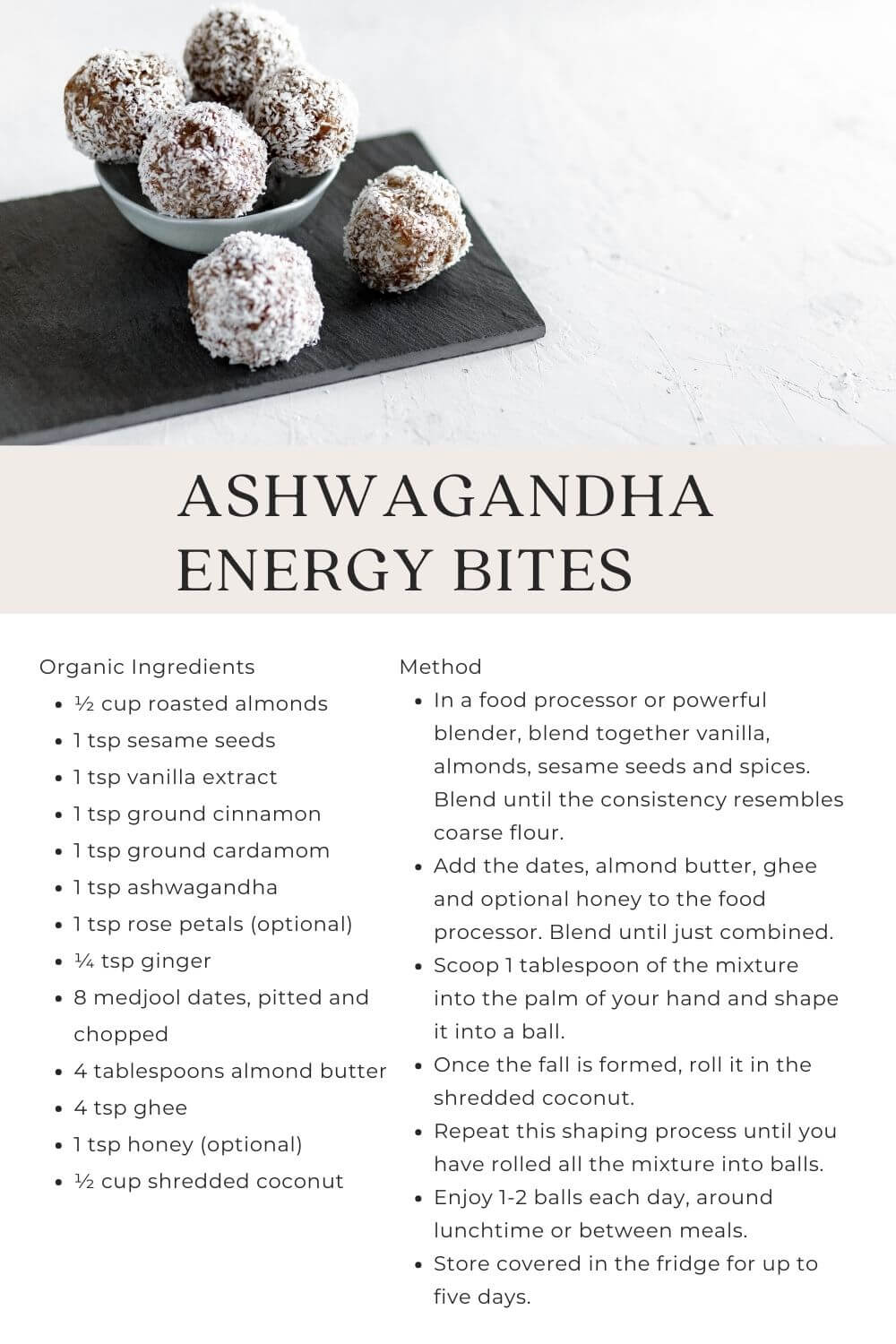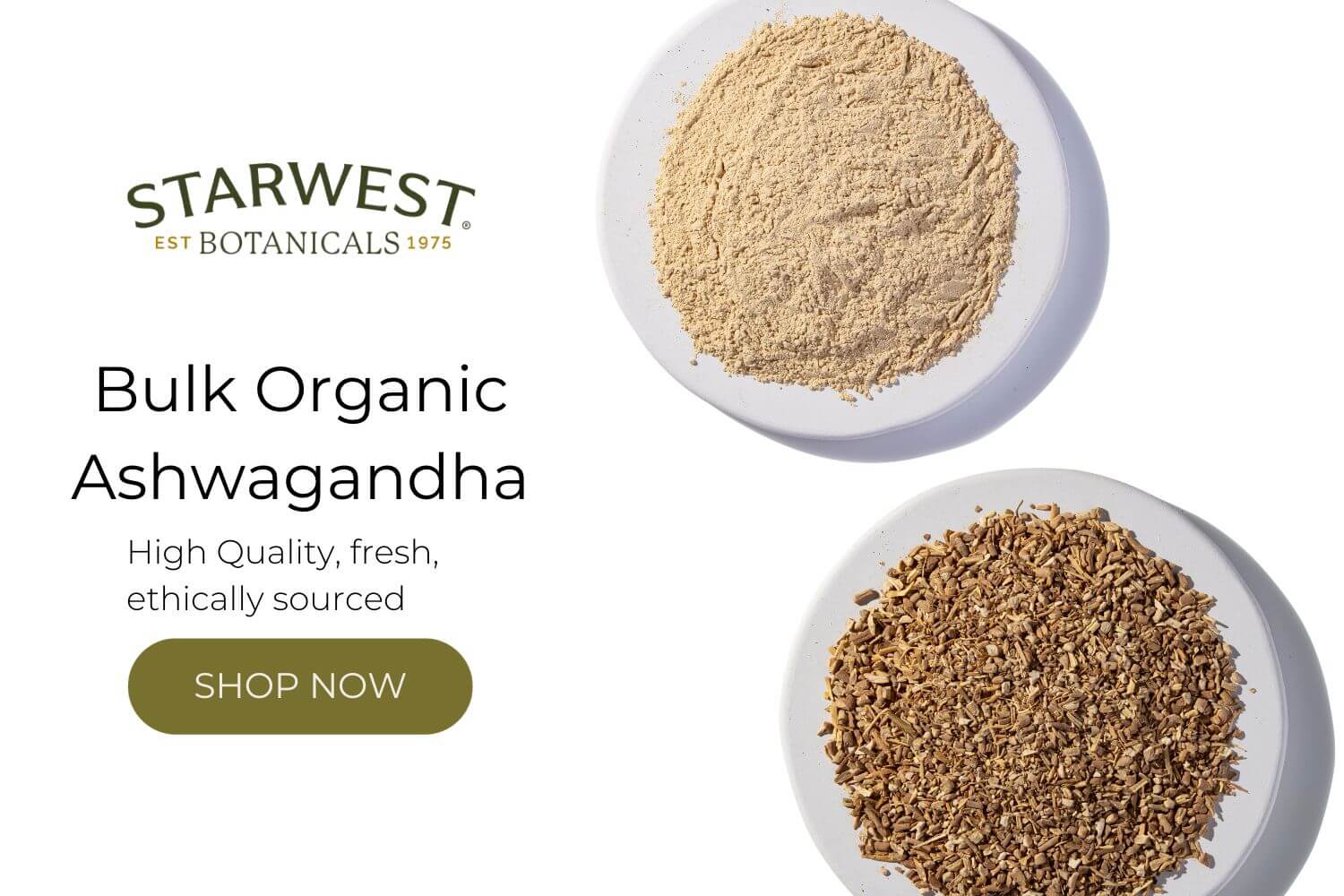3 Ayurvedic Practitioner Approved Ashwagandha Remedies | Starwest Botanicals
Posted by Molly McConnell on 12-03-2023

Did you know that ashwagandha is believed to be one of the most powerful adaptogens in the Ayurvedic paradigm? The word Adaptogen is a delineation from Western herbalism that refers to a category of herbs with a particular affinity for helping the body modulate and metabolize stress. Ashwagandha is often associated with stress-relief.
If you’ve been noticing extra stress rising in your body, it may be time to explore if ashwagandha could be a beneficial addition to your herbal routine. Check out When to Take Ashwagandha for more information on which moments in life lend themselves most seamlessly to supplementing with ashwagandha.
In Ayurvedic herbalism, Ashwagandha root is described as bitter, astringent, sweet, heating, heavy, and unctuous. These descriptors give insight into the type of medicine that this potent herb offers. With its heavy and unctuous qualities, ashwagandha may be grounding and calming. The heating property makes it a wonderful fall and winter herb. The sweet taste makes it rejuvenative, while the bitter and astringent tastes make it a little lighter to digest.
The tastes, heating or cooling action and medicinal qualities of herbs are always taken into consideration when crafting an Ayurvedic remedy. Additionally, traditional Ayurvedic herbalism reminds us that each herb has the potential to become more potent when wisely paired with other herbs and substances. Herbal blends and formulations are common in Ayurveda because the synergistic effect can bring more overall balance to the remedy and increase potency. Rather than taking ashwagandha all by itself and hoping for the best, try one of the practitioner-approved recipes below to get the most out of your herbal medicine.*
Now that you have a few reasons to use Ashwagandha, let’s learn more about HOW and WHEN to take ashwagandha, as well as what other herbs and substances to pair it with for the greatest impact.*
Stress Modulating Milk
If you can believe it, this recipe calls for good old fashioned organic whole cow’s milk. Ayurvedically speaking, there is no substitution for the deep nourishment that animal milk delivers to our tissues. That being said, the dairy that is widely available to us now, is not the same dairy that the ancient Ayurvedic texts wrote about thousands of years ago. For the closest results, look for a high-quality cow or goat dairy that is organic and grass-fed, if possible. If you’re not sure where to start, see if you can connect with a small-scale dairy at your local farmer’s market. A2 milk can also be a great option.
If this kind of cow’s dairy isn’t in the cards for you, opt for a minimally processed plant-based milk. Look for something that is free of genetically modified oils, emulsifiers and gums, evaporated cane juice, cane sugar or cane syrup, natural flavors or natural colors, vitamin D2, and carrageenan. When in doubt, try making your own almond milk or buying canned full-fat coconut milk and adding some water.
Organic Ingredients
- 1 cup milk (see notes above)
- 1 cup purified water
- ½ tsp ashwagandha powder
- ⅛ tsp cardamom powder
- A dash of maple syrup (remove from heat and then stir in)
- ½ tsp ghee or coconut oil
Method
- In a small/medium saucepan with a heavy bottom, combine milk, water and spices.
- Bring to a boil, then simmer with the lid on for about 10 minutes.
- Pour into a glass, straining the herbs if desired.
- Mix in maple syrup to taste and ghee or coconut oil.
- Enjoy 30 minutes before bed to wind down and support restful sleep - OR - in the morning to set the tone for a calm, centered and generative day ahead.

Rejuvenative Energy Bites
Rasayana is the word for rejuvenation in Sanskrit, and it speaks to the deeply nourishing quality that particular foods and herbs offer us. Ashwagandha is a rasayana substance and so are dates, ghee, and almonds - all of which are present in this recipe! Ayurvedically speaking, these are considered to be some of the most nourishing foods because they embody qualities that actually help build tissue. These same building qualities, can also make almonds, dates, ghee and ashwagandha heavy to digest.
Too much of a good thing is certainly possible, and when it comes to rasayana (or rejuvenative foods), a little goes a long way! If the digestive system is overloaded and isn’t able to effectively absorb and assimilate all these ingredients, a sticky toxic substance is formed. These undigested food particles can actually clog the body’s channels, rather than creating building blocks for your tissues.
With this in mind, enjoy no more than 1-2 energy bites per day — and make sure you’re hungry when you do. I recommend having them with lunch, when digestive capacity is at its peak, or in the afternoon between meals.
Organic Ingredients
- ½ cup roasted almonds
- 1 tsp sesame seeds
- 1 tsp vanilla extract
- 1 tsp ground cinnamon
- 1 tsp ground cardamom
- 1 tsp ashwagandha
- 1 tsp rose petals (optional)
- ¼ tsp ginger
- 8 medjool dates, pitted and chopped
- 4 tablespoons almond butter
- 4 tsp ghee
- 1 tsp honey (optional)
- ½ cup shredded coconut
Method
- In a food processor or powerful blender, blend together vanilla, almonds, sesame seeds and spices. Blend until the consistency resembles coarse flour.
- Add the dates, almond butter, ghee and optional honey to the food processor. Blend until just combined.
- Scoop 1 tablespoon of the mixture into the palm of your hand and shape it into a ball.
- Once the fall is formed, roll it in the shredded coconut.
- Repeat this shaping process until you have rolled all the mixture into balls.
- Enjoy 1-2 balls each day, around lunchtime or between meals.
- Store covered in the fridge for up to five days.
Grounding Massage Oil
Have you ever made your own herbal-infused oil? It’s a fun way to feel more connected to your body care rituals and to customize your oils to suit your needs. Ashwagandha massage oil is perfect for fall and winter, as well as for those who have a vata constitution. It is warming, rejuvenative, and very grounding.
The practice of daily or weekly self oil massage is one of the greatest gifts we can give ourselves of overall wellness. The ancient Ayurvedic texts tell us that abhyanga (oil massage) can be beneficial to the nervous system, and the circulatory system, as well as the digestive and immune systems!* It’s an ancient secret for longevity.
Supplies
- 1 cup ashwagandha
- 2 cups sesame oil
- 2 ½ cups sunflower oil
- An oven-safe pot or bowl
- A glass jar or bottle to store your oil
Method
- Heat oven to 250 degrees F.
- Combine oils and ashwagandha powder in an oven-safe pot.
- Place your pot in the oven.
- Cook for two days (8 hours each day) or three days (5 hours each day), leaving the pot in the oven (turned off) overnight.
- Stir occasionally to prevent the herbs from burning.
- On the last day, remove the pot from the oven and allow the oil to cool slightly.
- Place a muslin cloth, coffee filter or triple-folded cheese cloth over a mesh strainer. Strain your oil into a clean bowl. Transfer into a couple jars or bottles and label.
- Use daily or weekly for self oil massage. Store in a cool dark place for up to two years.
At Starwest Botanicals, we take pride in being a trusted source for a diverse array of top-quality organic ashwagandha varieties. Our commitment to excellence is reflected in our offerings, including Ashwagandha Root Powder, Ashwagandha Root Cut and Sift, Ashwagandha Root Extract, and Ashwagandha Root Capsules. Explore our extensive selection of organic Ayurvedic herbs and spices.

Bio
Molly McConnell is a Certified Ayurvedic Practitioner who is committed to cultivating collective wellness. Guided by curiosity, embodied listening, and the rhythms of nature, Molly’s approach to Ayurveda is intentional and intersectional. As the cofounder ofCultivate Balance, she supports purpose-oriented people to come home to their bodies and restore resilience through nourishment, ritual, and routine. For a more immersive experience,Connect with Molly 1:1 or check outThe Reset for Resilience.
Instagram/Tiktok
Website



